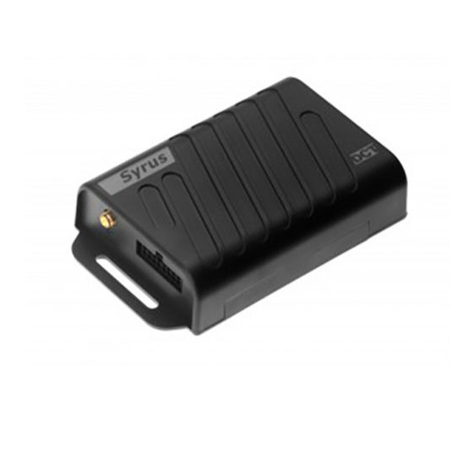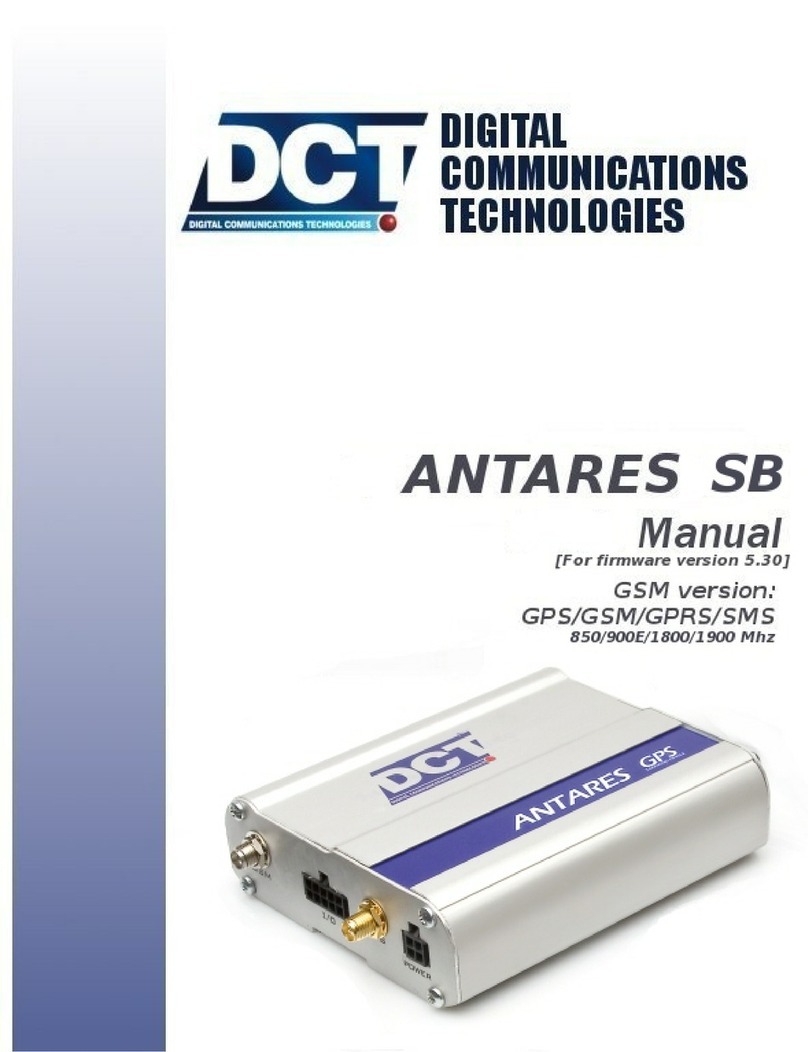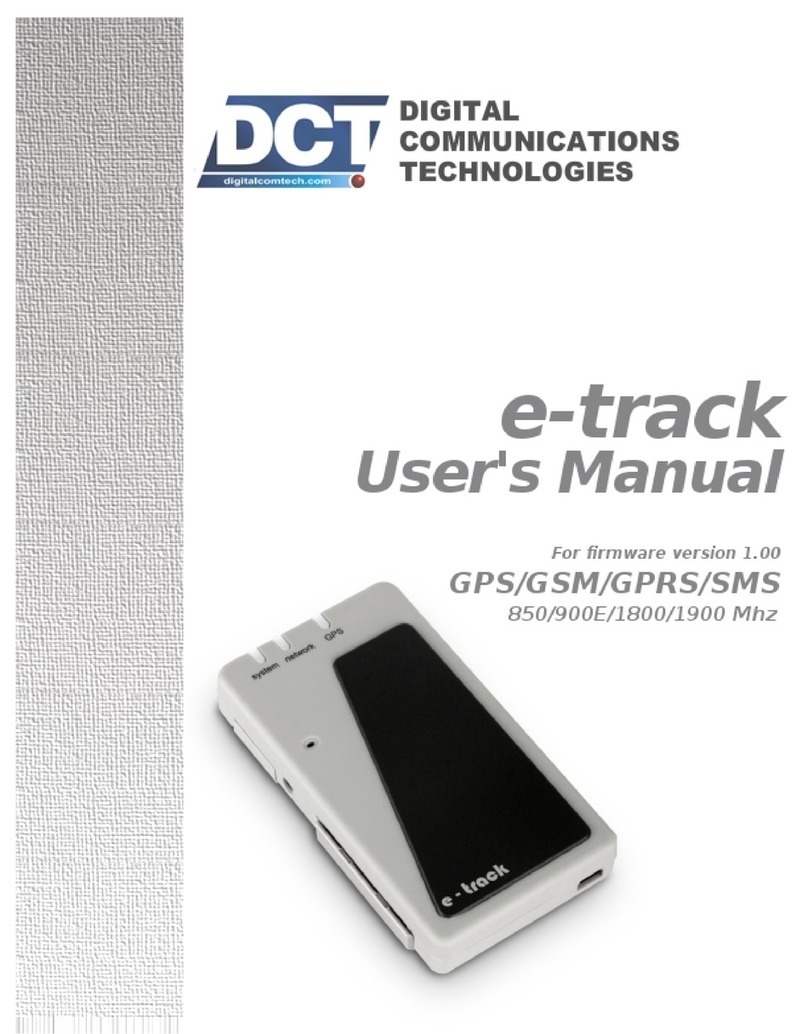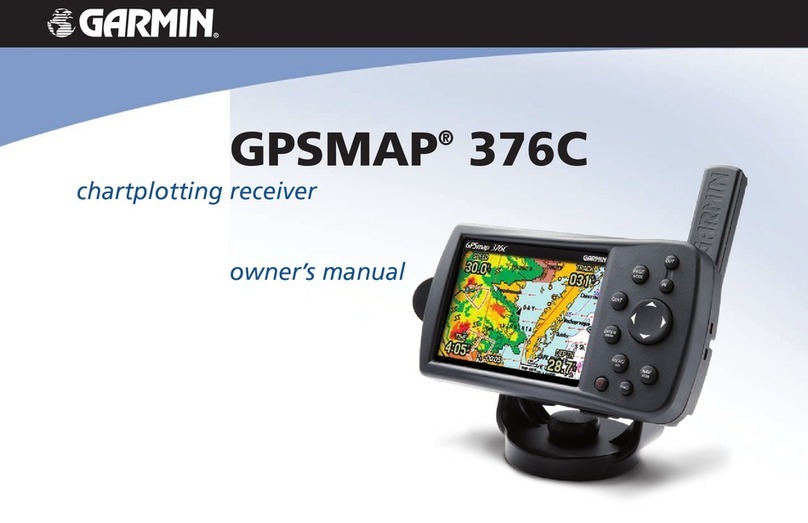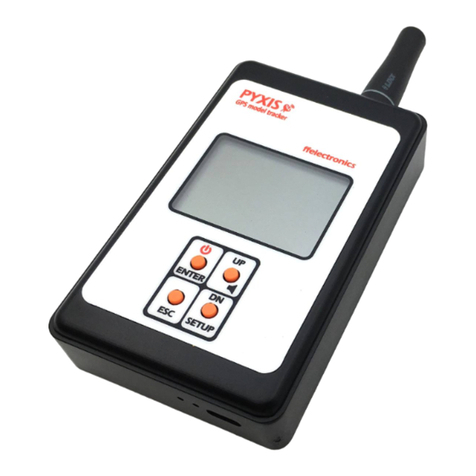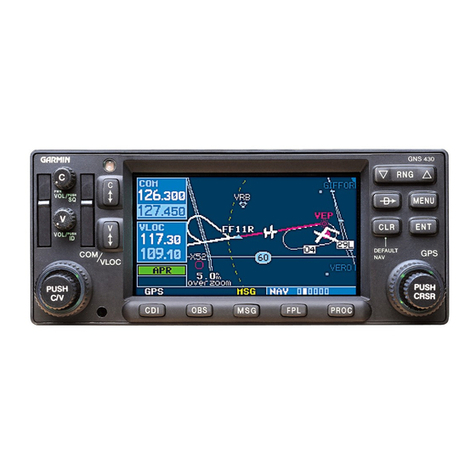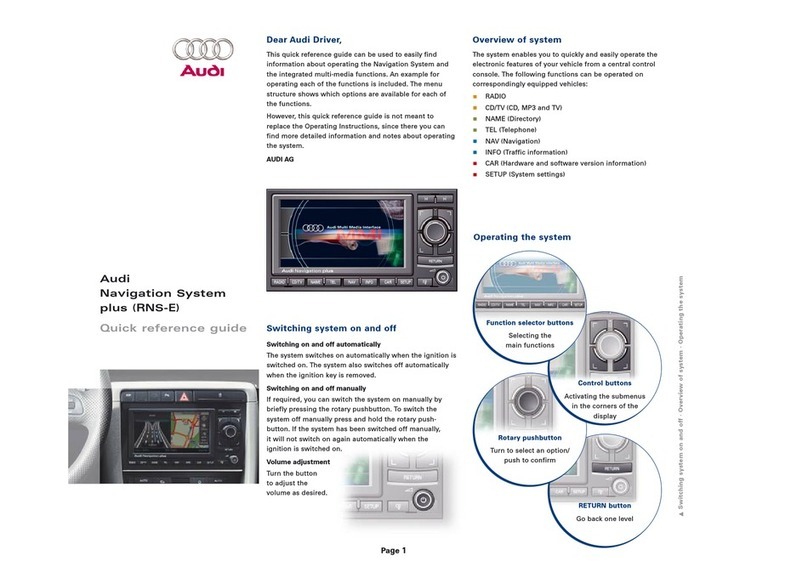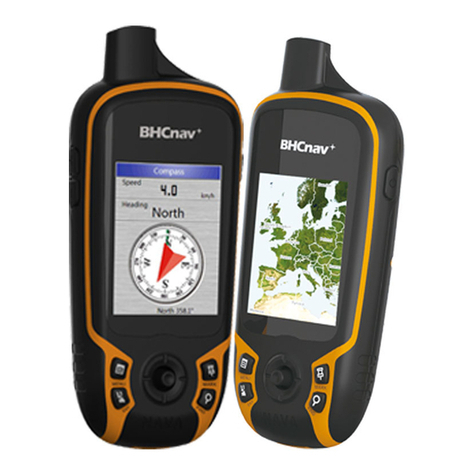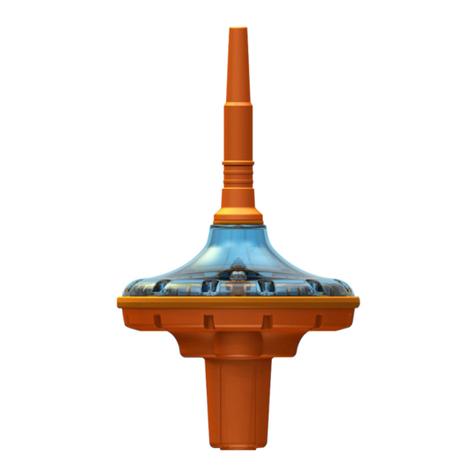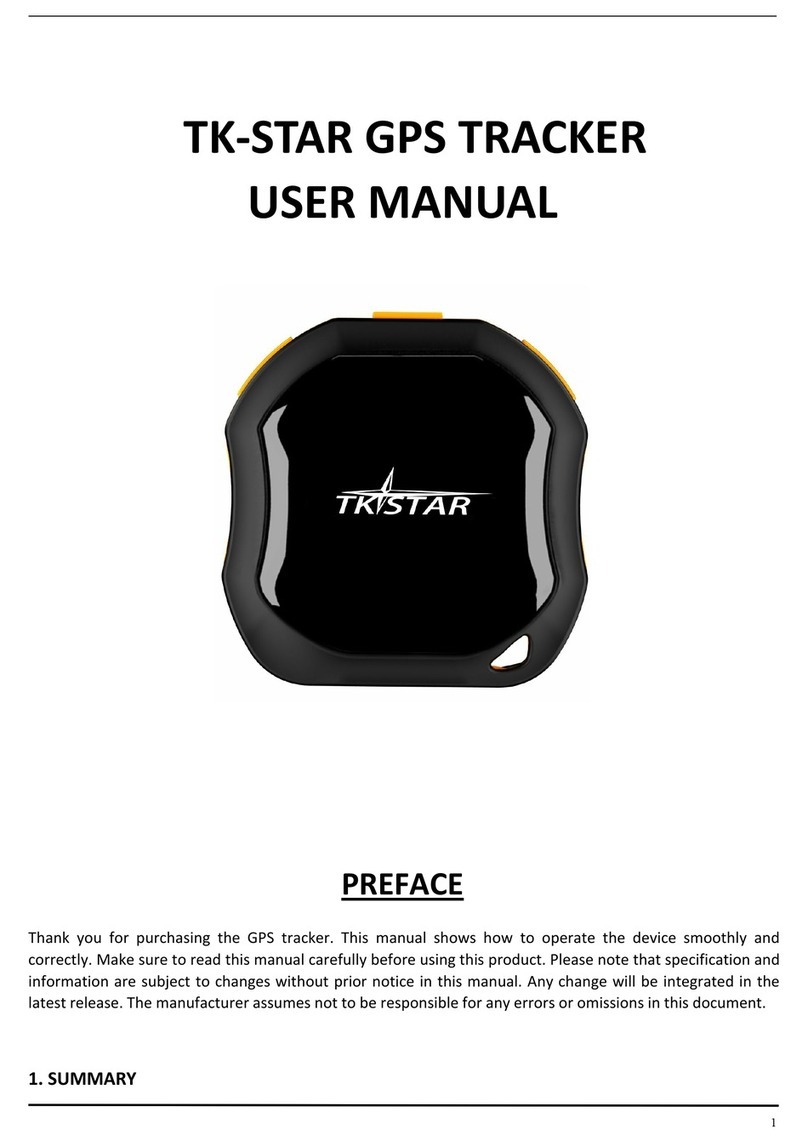DCT Antares SB User manual


Antares SBTM GSM User’s Manual (FW 5.21)
Digital Communications Technologies
April 15, 2008

.
Copyright
This manual is copyrighted. All type of reproduction of its content must be authorized by Digital
Communications TechnologiesTM .
Document information
Version: 1.01
Type: Release.
Date of release: 15-04-08
History:
Version Comments
1.00 26-02-08 First release
Added commands: AL, XAUO, XAEF, XAIT, XAID.
Changed commands: ED, EV, XAFU, XARD.
Expanded information on Over The Air section.
Added section Reports’ messages on Operation chapter.
Added information on extended-EV message.
Added information on Driving Metrics.
Added information on IMEI as ID.
1.01 15-04-08
Deleted error 80.
Fixed index value on XACR.
Special Note
This manual applies to the GSM version of the Antares SBTM .
Firmware version
This manual applies to firmware version 5.21 of the GSM version of the Antares SBTM . You can consult the unit’s
firmware version with the >QVR<TAIP command.

Regulatory Compliance
FCC
This product operates with Wavecom’s Q24PL transmitter.
FCC Parts 22H and 24E are granted to the Wavecom Q24PL under FCC identifier O9EQ24PL001.
The antenna gain, including cable loss, must not exceed 3 dBi at 1900 MHz / 1.4 dBi at 850
MHz for mobile operating configurations and 7 dBi at 1900 MHz / 1.4 dBi at 850 MHz for fixed
mounted operations, as defined in 2.1091 and 1.1307 of the rules for satisfying RF exposure com-
pliance.
In addition, the antenna used for this device must be installed to provide a separation distance of
at least 20 cm from all persons.

LIMITED WARRANTY
Digital Communications Technologies warrants the original purchaser that for a period of three
years from the date of purchase, the product shall be free of defects in materials and workmanship
under normal use. During the warranty period, Digital Communications Technologies shall, at its
option, repair or replace any defective product upon return of the product to its facilities, at no
charge for labor and materials. Any replacement and/or repaired parts are warranted for the re-
mainder of the original warranty or ninety (90) days, whichever is longer. The original owner must
promptly notify Digital Communications Technologies in writing that there is defect in material or
workman-ship, such written notice to be received in all events prior to expiration of the warranty
period.
International Warranty
The warranty for international customers is the same as for any customer within the United States,
with the exception that Digital Communications Technologies shall not be responsible for any cus-
toms fees, taxes, or VAT that may be due.
Warranty Procedure
To obtain service under this warranty, please return the item(s) in question to the point of pur-
chase. All authorized distributors and dealers have a warranty program. Anyone returning goods
to Digital Communications Technologies must first obtain an authorization number.Digital Com-
munications Technologies will not accept any shipment whatsoever for which prior authorization
has not been obtained.
Conditions to Void Warranty
This warranty applies only to defects in parts and workmanship relating to normal use. It does
not cover:
•Damage incurred in shipping or handling
•Damage caused by disaster such as fire, flood, wind, earthquake or lightning
•Damage due to causes beyond the control of Digital Communications Technologies such as
excessive voltage, mechanical shock or water damage
•Damage caused by unauthorized attachment, alterations, modifications or foreign objects
•Damage caused by peripherals unless such peripherals were supplied by Digital Communica-
tions Technologies
•Defects caused by failure to provide a suitable installation environment for the products
•Damage caused by use of the products for purposes other than those for which it was designed
•Damage from improper maintenance
•Damage arising out of any other abuse, mishandling or improper application of the products
Digital Communications Technologiess liability for failure to repair the product under this war-
ranty after a reasonable number of attempts will be limited to a replacement of the product, as the
exclusive remedy for breach of warranty. Under no circumstances shall Digital Communications

Technologies be liable for any special, incidental, or consequential damages based upon breach of
warranty, breach of contract, negligence, strict liability, or any other legal theory. Such damages
include, but are not limited to, loss of profits, loss of the product or any associated equipment, cost
of capital, cost of substitute or replacement equipment, facilities or services, down time, purchasers
time, the claims of third parties, including customers, and injury to property.
Disclaimer of Warranties
This warranty contains the entire warranty and shall be in lieu of any and all other warranties,
whether expressed or implied (including all implied warranties of merchantability or fitness for a
particular purpose) And of all other obligations or liabilities on the part of Digital Communica-
tions Technologies. Digital Communications Technologies neither assumes nor authorizes any other
person purporting to act on its behalf to modify or to change this warranty, nor to assume for it
any other warranty or liability concerning this product. This disclaimer of warranties and limited
warranty are governed by the laws of the State of Florida, USA.
WARNING
Digital Communications Technologies recommends that the entire system be completely tested on
a regular basis. However, despite frequent testing, and due to, but not limited to, criminal tam-
pering or electrical disruption, it is possible for this product to fail to perform as expected.
Out of Warranty Repairs
Digital Communications Technologies will at its option repair or replace out-of-warranty products
which are returned to its factory according to the following conditions. Anyone returning goods
to Digital Communications Technologies must first obtain an authorization number. Digital Com-
munications Technologies will not accept any shipment whatsoever for which prior authorization
has not been obtained. Products which Digital Communications Technologies determines to be
repairable will be repaired and returned. A set fee which Digital Communications Technologies
has predetermined and which may be revised from time to time, will be charged for each unit
repaired. Products which Digital Communications Technologies determines not to be repairable
will be replaced by the nearest equivalent product available at that time. The current market price
of the replacement product will be charged for each replacement unit.
4

Contents
0.1 Scope ........................... 15
0.2 Organization . . . . . . . . . . . . . . . . . . . . . . . 15
0.3 Technical Assistance . . . . . . . . . . . . . . . . . . . 16
1 About the Antares SBTM 17
1.1 Features . . . . . . . . . . . . . . . . . . . . . . . . . . 17
1.1.1 Analog to Digital Converter . . . . . . . . . . . 17
1.1.2 Discrete Inputs and Outputs . . . . . . . . . . 17
1.1.3 Optional Back-up Battery . . . . . . . . . . . . 18
1.1.4 Voice support . . . . . . . . . . . . . . . . . . . 18
1.1.5 SMS support . . . . . . . . . . . . . . . . . . . 18
1.1.6 TCP and UDP support . . . . . . . . . . . . . 18
1.1.7 Over the air control/consult . . . . . . . . . . . 18
1.1.8 Over the air upgrade . . . . . . . . . . . . . . . 18
1.1.9 Versatile RS-232 communication . . . . . . . . 19
1.1.10 Communication buffer . . . . . . . . . . . . . . 19
1.1.11 Automatic outputs’ control . . . . . . . . . . . 19
1.1.12 DNS lookup . . . . . . . . . . . . . . . . . . . . 19
1.1.13 Turn-by-turn report . . . . . . . . . . . . . . . 19
1.1.14 Driving metrics . . . . . . . . . . . . . . . . . . 19
1.1.15 IMEI as ID . . . . . . . . . . . . . . . . . . . . 20
1.1.16 Molex-type connectors . . . . . . . . . . . . . . 20
1.1.17 SMA Reverse polarity GPS antenna connector 20
1.1.18 Event Reporting . . . . . . . . . . . . . . . . . 20
1.2 Contents of package . . . . . . . . . . . . . . . . . . . 22
1.3 Front side description . . . . . . . . . . . . . . . . . . 23

Contents
1.3.1 RS-232 port . . . . . . . . . . . . . . . . . . . . 23
1.3.2 SIM card slot . . . . . . . . . . . . . . . . . . . 24
1.3.3 LEDs . . . . . . . . . . . . . . . . . . . . . . . 24
1.3.4 AUDIO jack . . . . . . . . . . . . . . . . . . . 25
1.4 Back side description . . . . . . . . . . . . . . . . . . . 26
1.4.1 GSM Antenna connector . . . . . . . . . . . . . 26
1.4.2 GPS Antenna connector . . . . . . . . . . . . . 26
1.4.3 I/O molex-type connector . . . . . . . . . . . . 26
1.4.4 Power/ignition molex-type connector . . . . . . 27
1.5 Specifications . . . . . . . . . . . . . . . . . . . . . . . 29
1.5.1 Dimensions . . . . . . . . . . . . . . . . . . . . 29
1.5.2 Environment . . . . . . . . . . . . . . . . . . . 29
1.5.3 Power . . . . . . . . . . . . . . . . . . . . . . . 29
1.5.4 Inputs/Ignition . . . . . . . . . . . . . . . . . . 30
1.5.5 Outputs . . . . . . . . . . . . . . . . . . . . . . 30
1.5.6 Analog To Digital Converter . . . . . . . . . . 30
1.5.7 Audio . . . . . . . . . . . . . . . . . . . . . . . 30
1.5.8 GSM/GPRS module . . . . . . . . . . . . . . . 31
1.5.9 GPS module . . . . . . . . . . . . . . . . . . . 32
1.5.10 GSM antenna connector . . . . . . . . . . . . . 32
1.5.11 GPS antenna connector . . . . . . . . . . . . . 32
2 Installation 33
2.1 Power Supply . . . . . . . . . . . . . . . . . . . . . . . 33
2.1.1 Vehicles with a main power switch . . . . . . . 33
2.2 Inputs detection . . . . . . . . . . . . . . . . . . . . . 37
2.3 Ignition detection . . . . . . . . . . . . . . . . . . . . . 37
2.4 Outputs . . . . . . . . . . . . . . . . . . . . . . . . . . 38
2.5 Connection diagrams . . . . . . . . . . . . . . . . . . . 39
6

Contents
3 Operation 41
3.1 Serial Port . . . . . . . . . . . . . . . . . . . . . . . . . 41
3.2 LEDs ........................... 42
3.2.1 Power (Red) . . . . . . . . . . . . . . . . . . . 42
3.2.2 Signal (Orange) . . . . . . . . . . . . . . . . . . 43
3.2.3 Fix (Yellow) . . . . . . . . . . . . . . . . . . . . 44
3.2.4 On line (Green) . . . . . . . . . . . . . . . . . . 44
3.3 Inputs/Ignition . . . . . . . . . . . . . . . . . . . . . . 44
3.4 Outputs . . . . . . . . . . . . . . . . . . . . . . . . . . 46
3.5 Analog to Digital Converter . . . . . . . . . . . . . . . 47
3.6 Back-up Battery . . . . . . . . . . . . . . . . . . . . . 48
3.7 Sleep Mode . . . . . . . . . . . . . . . . . . . . . . . . 50
3.8 Over The Air . . . . . . . . . . . . . . . . . . . . . . . 50
3.8.1 Via IP hosts (GPRS) . . . . . . . . . . . . . . 50
3.8.2 Via SMS (GSM) . . . . . . . . . . . . . . . . . 53
3.8.3 Voice (GSM) . . . . . . . . . . . . . . . . . . . 53
3.9 TAIP console . . . . . . . . . . . . . . . . . . . . . . . 53
3.9.1 TAIP Message Format . . . . . . . . . . . . . . 54
3.9.2 Reporting messages . . . . . . . . . . . . . . . 55
3.9.3 Interacting . . . . . . . . . . . . . . . . . . . . 56
3.10 Remote host software . . . . . . . . . . . . . . . . . . 56
3.10.1 Working with TCP . . . . . . . . . . . . . . . . 56
3.10.2 Working with UDP . . . . . . . . . . . . . . . . 57
3.10.3 Working with SMS . . . . . . . . . . . . . . . . 58
3.11 Reports’ messages . . . . . . . . . . . . . . . . . . . . 59
3.11.1 Events’ Reporting Messages . . . . . . . . . . . 59
3.11.2 Responses to TAIP Commands Messages . . . 60
3.12 Reports’ buffer . . . . . . . . . . . . . . . . . . . . . . 61
3.13 Firmware Upgrade . . . . . . . . . . . . . . . . . . . . 62
3.13.1 Over The Air . . . . . . . . . . . . . . . . . . . 62
3.13.2 Upgrading locally . . . . . . . . . . . . . . . . . 64
7

Contents
3.14 Antares Configuration Tool (ACT) . . . . . . . . . . . 64
3.14.1 Communicating locally with the Antares SBTM 65
3.14.2 STEP 2. Read the unit’s version . . . . . . . 66
3.14.3 Managing regions . . . . . . . . . . . . . . . . . 67
4 Configuration 70
4.1 *Unit’s ID . . . . . . . . . . . . . . . . . . . . . . . . . 71
4.2 *Enabling the unit on GSM and GPRS . . . . . . . . 71
4.2.1 SIM Card’s PIN for GSM registration . . . . . 72
4.2.2 Access Point Name (APN) for GPRS set up . . 73
4.3 *Destinations (DPs and DAs) . . . . . . . . . . . . . . 74
4.3.1 Destination Points (DPs) . . . . . . . . . . . . 74
4.3.2 Destination Addresses (DAs) . . . . . . . . . . 75
4.4 Reporting . . . . . . . . . . . . . . . . . . . . . . . . . 76
4.5 *Event Machine . . . . . . . . . . . . . . . . . . . . . . 77
4.5.1 Triggers . . . . . . . . . . . . . . . . . . . . . . 77
4.5.2 Actions . . . . . . . . . . . . . . . . . . . . . . 79
4.5.3 Events . . . . . . . . . . . . . . . . . . . . . . . 81
4.5.4 Signals . . . . . . . . . . . . . . . . . . . . . . . 83
4.5.5 Examples . . . . . . . . . . . . . . . . . . . . . 86
4.6 Using Regions (geo-fences) . . . . . . . . . . . . . . . . 87
4.7 Setting Speed Limits ................... 88
4.8 The Time And Distance criteria . . . . . . . . . . . . 89
4.9 Using Time Windows .................. 90
4.10 Using Counters ...................... 91
4.11 Manipulating signals ................... 95
4.12 User signals ........................ 95
4.13 Using Heading Deltas (turn-by-turn report) . . . . . . 95
4.14 Driving Metrics (Acceleration, Max. Speed, etc) . . . 96
4.15 Voice calls . . . . . . . . . . . . . . . . . . . . . . . . . 98
4.16 Battery monitoring . . . . . . . . . . . . . . . . . . . . 98
8

Contents
4.17 Serial port devices . . . . . . . . . . . . . . . . . . . . 98
4.18 Analog to Digital Converter monitoring . . . . . . . . 101
4.19 Using a TCP/UDP keep-alive . . . . . . . . . . . . . . 101
4.20 IMEI as ID . . . . . . . . . . . . . . . . . . . . . . . . 101
4.21 Sleep mode . . . . . . . . . . . . . . . . . . . . . . . . 101
4.22 Restoring the unit . . . . . . . . . . . . . . . . . . . . 101
4.23 Resetting the unit . . . . . . . . . . . . . . . . . . . . 101
4.24 Using Scripts . . . . . . . . . . . . . . . . . . . . . . . 102
4.24.1 Creating an script from scratch . . . . . . . . . 103
4.24.2 Reading Scripts . . . . . . . . . . . . . . . . . . 103
4.24.3 Writing Scripts . . . . . . . . . . . . . . . . . . 104
4.24.4 Scripts Over The Air . . . . . . . . . . . . . . . 104
5 Scenarios and examples 106
5.1 Getting Started . . . . . . . . . . . . . . . . . . . . . . 106
5.1.1 Setting the unit’s ID . . . . . . . . . . . . . . . 106
5.1.2 Setting the APN and PIN . . . . . . . . . . . . 106
5.1.3 Creating a Destination Point (DP) . . . . . . . 107
5.1.4 Creating a Destination Address (DA) . . . . . 108
5.1.5 Creating a time-period criterion . . . . . . . . 108
5.1.6 Tiding a signal to an event . . . . . . . . . . . 109
5.1.7 Checking the host software/server . . . . . . . 109
5.1.8 Adding an Input report . . . . . . . . . . . . . 110
5.1.9 Script . . . . . . . . . . . . . . . . . . . . . . . 110
5.2 Adding SMS reporting . . . . . . . . . . . . . . . . . . 111
5.2.1 Create the SMS Destination Point . . . . . . . 111
5.2.2 Create a new Destination Address . . . . . . . 111
5.2.3 Change the Input report event definition . . . . 112
5.2.4 Create a SMS custom message . . . . . . . . . 112
5.2.5 Check the reported message . . . . . . . . . . . 112
5.2.6 Script . . . . . . . . . . . . . . . . . . . . . . . 113
9

Contents
5.3 Adding SMS interaction . . . . . . . . . . . . . . . . . 114
5.3.1 Query the unit with a SMS . . . . . . . . . . . 114
5.3.2 Set an output with a SMS . . . . . . . . . . . . 114
5.4 Adding voice interaction . . . . . . . . . . . . . . . . . 115
5.4.1 Make the unit accept a phone call . . . . . . . 115
5.4.2 Have the unit initiate a voice call . . . . . . . . 115
5.5 Ignition detection . . . . . . . . . . . . . . . . . . . . . 116
5.5.1 Script . . . . . . . . . . . . . . . . . . . . . . . 116
5.6 Speed violation (with warning) report . . . . . . . . . 117
5.6.1 Setting the speed limit . . . . . . . . . . . . . . 118
5.6.2 Start a counter . . . . . . . . . . . . . . . . . . 118
5.6.3 Creating the violation report . . . . . . . . . . 118
5.6.4 Something is missing... . . . . . . . . . . . . . . 118
5.6.5 Driving the LED . . . . . . . . . . . . . . . . . 118
5.6.6 Script . . . . . . . . . . . . . . . . . . . . . . . 119
5.7 START/STOP monitoring . . . . . . . . . . . . . . . . 120
5.7.1 Setting a low speed limit . . . . . . . . . . . . 121
5.7.2 Start a counter . . . . . . . . . . . . . . . . . . 121
5.7.3 Create the STOP report . . . . . . . . . . . . . 121
5.7.4 Create the START report . . . . . . . . . . . . 122
5.7.5 Something’s missing... . . . . . . . . . . . . . . 122
5.7.6 Script . . . . . . . . . . . . . . . . . . . . . . . 122
5.8 Safe engine turn off . . . . . . . . . . . . . . . . . . . . 124
5.8.1 Create the speed limit . . . . . . . . . . . . . . 125
5.8.2 Creating a timer . . . . . . . . . . . . . . . . . 125
5.8.3 Cutting the ignition . . . . . . . . . . . . . . . 125
5.8.4 Stopping the counter . . . . . . . . . . . . . . . 125
5.8.5 Restore the user signal . . . . . . . . . . . . . . 125
5.8.6 Script . . . . . . . . . . . . . . . . . . . . . . . 126
5.8.7 Operation . . . . . . . . . . . . . . . . . . . . . 128
5.9 Improving the periodic report . . . . . . . . . . . . . . 129
10

Contents
5.9.1 Script . . . . . . . . . . . . . . . . . . . . . . . 130
5.10 Reconnection event for TCP . . . . . . . . . . . . . . . 133
5.10.1 Script . . . . . . . . . . . . . . . . . . . . . . . 133
5.11 Main-power-loss alarm . . . . . . . . . . . . . . . . . . 136
5.11.1 Script . . . . . . . . . . . . . . . . . . . . . . . 136
5.12 Using the sleep mode . . . . . . . . . . . . . . . . . . . 136
5.13 Configuring/reading a distance counter . . . . . . . . . 137
5.14 Generating an extended-EV report . . . . . . . . . . . 137
6 Unit’s TAIP reference 139
6.1 (AL) Altitude . . . . . . . . . . . . . . . . . . . . . . . 140
6.2 (CP) Compact Position . . . . . . . . . . . . . . . . . 141
6.3 (DA) Destination Address . . . . . . . . . . . . . . . . 142
6.3.1 Examples . . . . . . . . . . . . . . . . . . . . . 143
6.4 (DP) Destination Point . . . . . . . . . . . . . . . . . 144
6.5 (ED) Event Definition . . . . . . . . . . . . . . . . . . 146
6.5.1 Examples . . . . . . . . . . . . . . . . . . . . . 148
6.6 (ER) Error Report . . . . . . . . . . . . . . . . . . . . 150
6.6.1 Example . . . . . . . . . . . . . . . . . . . . . . 150
6.7 (ET) Event Report, time only message . . . . . . . . . 151
6.8 (EV) Event Message . . . . . . . . . . . . . . . . . . . 152
6.9 (GC) Counters, Timers, Distancers . . . . . . . . . . . 154
6.9.1 Counters’ commands . . . . . . . . . . . . . . . 155
6.9.2 Examples . . . . . . . . . . . . . . . . . . . . . 155
6.10 (GF) GPIOs’ function (I/O) . . . . . . . . . . . . . . . 157
6.11 (GS) Speed Limit . . . . . . . . . . . . . . . . . . . . . 158
6.12 (GT) Time Window . . . . . . . . . . . . . . . . . . . 159
6.13 (GR) Regions . . . . . . . . . . . . . . . . . . . . . . . 160
6.13.1 Special cases . . . . . . . . . . . . . . . . . . . 161
6.13.2 Regions’ creation examples . . . . . . . . . . . 161
6.14 (ID) Identification . . . . . . . . . . . . . . . . . . . . 166
11

Contents
6.15 (MS) Memory Session . . . . . . . . . . . . . . . . . . 167
6.16 (MT) MDT Mode . . . . . . . . . . . . . . . . . . . . 168
6.17 (PV) Position-velocity . . . . . . . . . . . . . . . . . . 169
6.18 (RF) Radio Frequency module configuration . . . . . . 170
6.19 (RM) Reporting Mode . . . . . . . . . . . . . . . . . . 171
6.20 (RP) Registration Parameters (Cellular Network) . . . 172
6.21 (RT) Reset message . . . . . . . . . . . . . . . . . . . 174
6.22 (SS) Signal Status . . . . . . . . . . . . . . . . . . . . 175
6.22.1 Examples . . . . . . . . . . . . . . . . . . . . . 175
6.23 (ST) Status . . . . . . . . . . . . . . . . . . . . . . . . 177
6.24 (TM) Time and Date . . . . . . . . . . . . . . . . . . . 178
6.25 (TD) Time and Distance signals configuration . . . . . 179
6.26 (TX) Text Message . . . . . . . . . . . . . . . . . . . . 181
6.26.1 Escape sequences . . . . . . . . . . . . . . . . . 181
6.27 (VR) Version number . . . . . . . . . . . . . . . . . . 182
6.28 (XAAC) Analog to Digital converter . . . . . . . . . . 183
6.29 (XABS) Battery Status . . . . . . . . . . . . . . . . . 184
6.30 (XACR) Counter Report . . . . . . . . . . . . . . . . . 185
6.30.1 Reported Message . . . . . . . . . . . . . . . . 185
6.31 (XACT) Communication Test . . . . . . . . . . . . . . 187
6.32 (XADM) Diagnostic Message . . . . . . . . . . . . . . 188
6.33 (XADP) Destination Points . . . . . . . . . . . . . . . 190
6.33.1 IP-type destinations . . . . . . . . . . . . . . . 190
6.33.2 Telephone destinations . . . . . . . . . . . . . . 190
6.34 (XAEF) Extended-EV message Formats . . . . . . . . 192
6.35 (XAFU) Firmware Upgrade (Over the air) . . . . . . . 193
6.36 (XAGA) ADC levels . . . . . . . . . . . . . . . . . . . 194
6.37 (XAGB) Back-up Battery levels . . . . . . . . . . . . . 195
6.38 (XAGH) Heading deltas . . . . . . . . . . . . . . . . . 196
6.39 (XAGP) GPRS Pause . . . . . . . . . . . . . . . . . . 196
6.40 (XAID) IMEI as ID . . . . . . . . . . . . . . . . . . . 197
12

Contents
6.41 (XAIM) IMEI consult . . . . . . . . . . . . . . . . . . 198
6.42 (XAIO) Input, Outputs consult . . . . . . . . . . . . 199
6.43 (XAIP) IP address . . . . . . . . . . . . . . . . . . . . 200
6.44 (XAIT) Driving Metrics (acceleration and maximums.) 201
6.45 (XAKA) Keep Alive . . . . . . . . . . . . . . . . . . . 202
6.46 (XALL) Local Lock . . . . . . . . . . . . . . . . . . . 203
6.47 (XANB) Network Band mode . . . . . . . . . . . . . . 204
6.48 (XANS) Network Status (GPRS) . . . . . . . . . . . . 205
6.49 (XAPM) Power Management . . . . . . . . . . . . . . 206
6.49.1 Examples . . . . . . . . . . . . . . . . . . . . . 208
6.50 (XARD) Reset diagnostics . . . . . . . . . . . . . . . . 209
6.51 (XASF) Store & Forward Buffer . . . . . . . . . . . . 210
6.52 (XATD) Current Destination Point . . . . . . . . . . . 211
6.53 (XATM) User-defined Text Messages . . . . . . . . . . 212
6.54 (XATS) TAIP console Sniffer . . . . . . . . . . . . . . 213
6.54.1 Example . . . . . . . . . . . . . . . . . . . . . . 213
6.55 (XAUN) UDP Network . . . . . . . . . . . . . . . . . 214
6.56 (XAUO) UDP Origin Port . . . . . . . . . . . . . . . . 215
6.57 (XAUP) UDP Server Port . . . . . . . . . . . . . . . . 216
6.58 (XAVC) Voice Call Start . . . . . . . . . . . . . . . . . 217
6.59 (XAVE) Voice Call End . . . . . . . . . . . . . . . . . 218
6.60 (XAVI) Voice Call Identification switch . . . . . . . . 219
6.61 (XAVM) Microphone gain . . . . . . . . . . . . . . . . 220
6.62 (XAVS) Speaker volume . . . . . . . . . . . . . . . . . 221
6.63 Errors list . . . . . . . . . . . . . . . . . . . . . . . . . 222
7 Appendix A - Quick Start Guide 225
8 Appendix B - Getting Started Script 228
9 Appendix C - Signals’ Table 229
13

Contents
10 Appendix D - Quick TAIP reference 232
10.1 Setting the Antares SBTM ID............... 232
10.2 Setting the APN . . . . . . . . . . . . . . . . . . . . . 232
10.3 Configuring the SIM card PIN . . . . . . . . . . . . . 232
10.4 Restarting the unit . . . . . . . . . . . . . . . . . . . . 232
10.5 Restoring to factory defaults . . . . . . . . . . . . . . 232
10.6 Reseting the GPRS connection . . . . . . . . . . . . . 233
10.7 Configuring a host address/type . . . . . . . . . . . . 233
10.8 Configuring a telephone number for SMS and Voice
interaction . . . . . . . . . . . . . . . . . . . . . . . . . 233
10.9 Querying hosts/ports and telephones . . . . . . . . . . 234
10.10Grouping AVL servers on DAs ............. 234
10.11Defining a periodic timer . . . . . . . . . . . . . . . . 234
10.11.1 Using a time counter . . . . . . . . . . . . . . . 234
10.11.2 Using a Time And Distance counter . . . . . . 234
10.12Creating an event . . . . . . . . . . . . . . . . . . . . . 234
10.13Creating a turn-by-turn (heading change) report . . . 235
10.14Creating a kilometer counter . . . . . . . . . . . . . . 235
10.15Setting an output . . . . . . . . . . . . . . . . . . . . . 235
10.16Querying the state of an input . . . . . . . . . . . . . 235
10.17Querying the state of the vehicle-ignition input . . . . 235
10.18Querying the Analog to digital converter . . . . . . . . 236
10.19Querying the Internal back-up battery level . . . . . . 236
10.20Driving the unit to sleep power mode . . . . . . . . . . 236
10.21Querying the firmware version . . . . . . . . . . . . . . 236
10.22Activating PAD mode on serial port . . . . . . . . . . 236
14

Preface
This document is the Antares SBTM User’s Guide. On this document
you will find information on what is the Antares SBTM , its features,
specifications, installation instructions and explanation on the unit’s
configuration and operation.
This document is available at:
http://www.digitalcomtech.com
Refer to this site or to your Digital Communications TechnologiesTM contact
for the latest version of this document.
0.1 Scope
Most of the technical information related to the Antares SBTM device
is expected to be written on this manual. However, there are some
external documents called Application Notes which contains some
specific development, that falls beyond the scope of this document.
This manual is intended to be used by anyone interacting with the
unit and having some basic technical knowledge.
After reading this document the reader will be capable to install,
configure and operate the unit on the day-to-day vehicle tracking
job.
0.2 Organization
This document is organized in the following way:
•The About chapter gives a functional and physical description
of the unit.
•The Installation chapter has guides and recommendations on
the physical and electrical conditions for the installation of the
unit.
•The Operation chapter gives information on how to interact
with the unit.
•The Configuration chapter instructs on how to configure the
unit.

0.3. TECHNICAL ASSISTANCE
•The TAIP reference chapter is a compendium of all the configu-
ration and query commands, therefore it is the big complement
of the Operation and Configuration chapters.
•The Quick Start Guide is a very condensed summary to get you
started with the unit.
0.3 Technical Assistance
You can contact Digital Communications TechnologiesTM for technical
support at:
Or by calling
1 305 7183336
9AM to 5PM Eastern US time.
16

1 About the Antares SBTM
The Antares SBTM is a vehicle tracking and controlling device designed
to interact remotely with Automated Vehicle Location (AVL) systems
or end-users by using the GSM/GPRS cellular network as commu-
nication media. The Antares unit is installed on a vehicle whose
geographical position and/or state is desired to be remotely moni-
tored/controlled.
The geographical position is taken from the unit’s built-in GPS re-
ceiver which gives information such as position, velocity, heading,
time-date, acceleration, altitude. The vehicle’s state may be moni-
tored and/or controlled by using the unit’s discrete inputs-outputs,
analog-to-digital converter, audio support and its RS-232 serial port.
The last one useful to communicate with expanding accessories such
as PDAs or MDTs1.
1.1 Features
A list with the unit’s features is presented next. A brief descriptions
is given, for detailed information see the given sections/chapters.
1.1.1 Analog to Digital Converter
An input voltage ranging between 0 and 32V may be measured with
the ADC. For information on the ADC refer to the Analog to Digital
Converter section on the Operation chapter.
1.1.2 Discrete Inputs and Outputs
The unit has 4 discrete inputs, 4 discrete outputs and an ignition
sense.
Electrical information is found on the About and Operation chapters.
1Mobile Data Terminal.

1.1. FEATURES
1.1.3 Optional Back-up Battery
The Antares SBTM may include2a built-in back-up battery to be
used when the vehicle’s battery is unavailable. Refer to the Operation
chapter for more information.
1.1.4 Voice support
An audio jack for non-balanced hands-free audio system is provided to
initiate and receive phone calls with the unit. Refer to the Operation
and Configuration chapters.
1.1.5 SMS support
When the unit is registered on the GSM network in can send and
receive SMSs. This feature is used to send user-defined event’s text
to phone numbers, TAIP reports to SMPP servers and to receive
commands or queries to interact with the unit over-the-air. See the
Operation and Configuration chapters.
1.1.6 TCP and UDP support
The unit may send its reports via GPRS to IP hosts using TCP
and/or UDP transport protocols. As an improvement from previous
versions, all IP-type Destinations can be used either on TCP or UDP
and the unit may work with Destinations on TCP and with Destina-
tions on UDP at the same time. This means that a global parameter
(XASP) defining the transport protocol for all DPs no longer exists.
The DP and XADP TAIP messages have been modified to support
this new feature.
Note:
.
1.1.7 Over the air control/consult
The unit can be controlled/consulted remotely via GPRS (TCP or
UDP) and/or via GSM by means of SMS messages.
1.1.8 Over the air upgrade
The unit’s firmware may be upgraded3via GPRS communication
with a single instruction.
2Ask for built-in battery when buying the unit.
3Not all units have this feature enabled. TAIP error 69 or 90 is returned when
using the firmware upgrade command (XAFU)
18
Other manuals for Antares SB
1
Table of contents
Other DCT GPS manuals
Popular GPS manuals by other brands
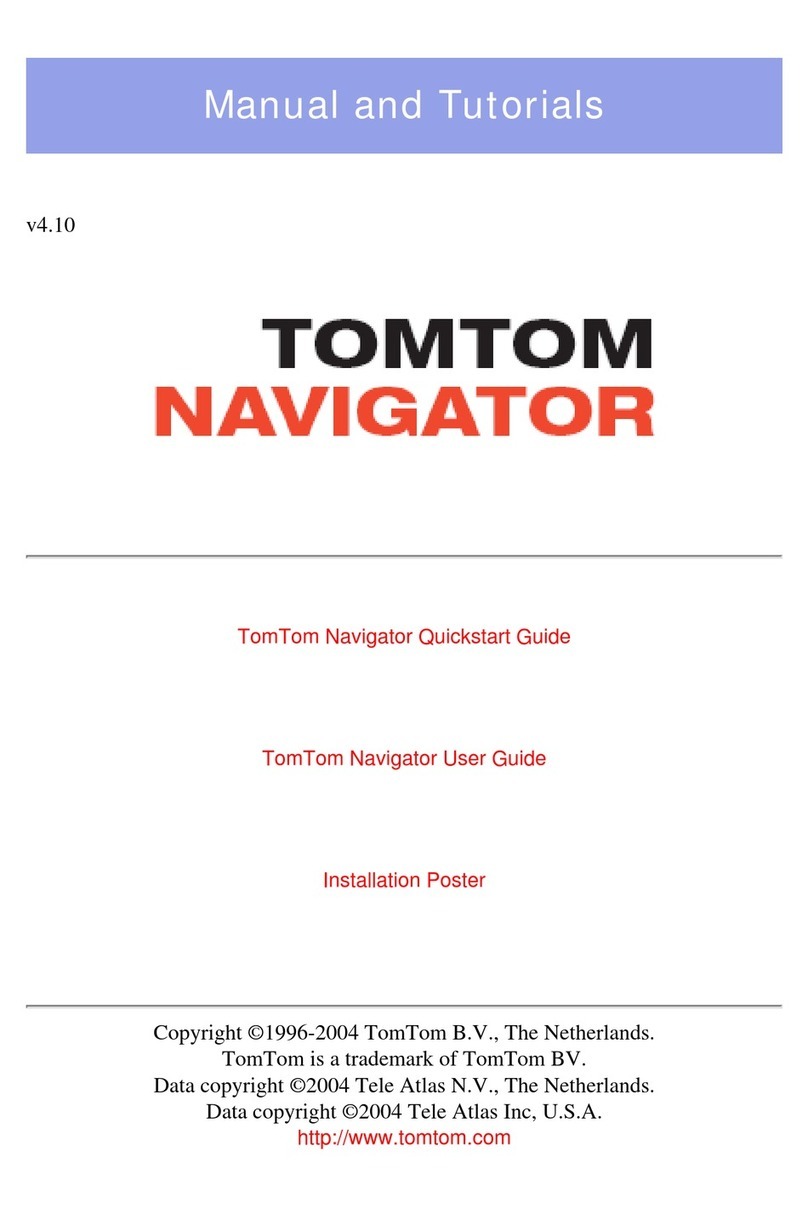
TomTom
TomTom XL 540S - Widescreen Portable GPS Navigator Quick start and user guide
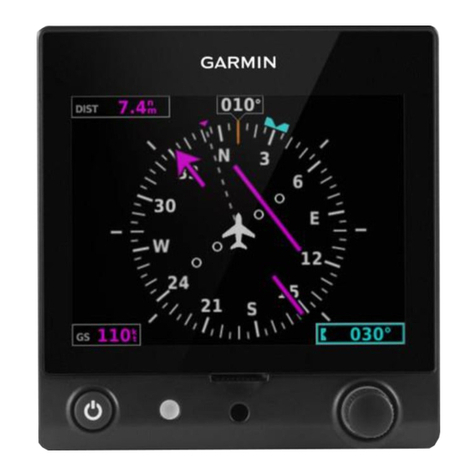
Garmin
Garmin Approach G5 - GPS-Enabled Golf Handheld installation manual

Navibe
Navibe GB337 user manual
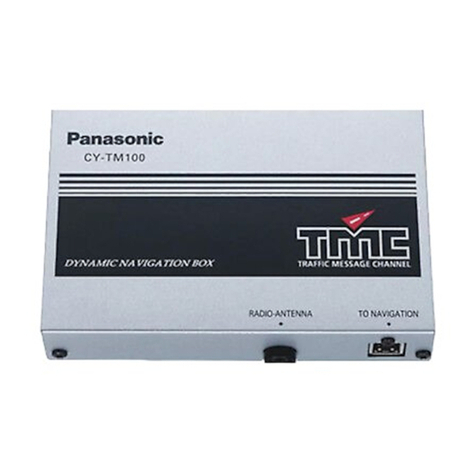
Panasonic
Panasonic CY-TM100N Service manual

CanMore
CanMore PT-911 user manual

InterSense
InterSense InertiaCam IS-1500 user guide
